“Vendo su Ebay per scambiare piccoli beni usati non a scopo di lucro. Come per molti altri utenti anche per me si tratta di un piccolo ed utile hobby. Per questo mi sforzo di dare sempre, quando è necessario, una esatta descrizione di ciò che vendo perché ci tengo che l’acquirente sia alla fine soddisfatto, così come vorrei essere soddisfatto io, se fossi nei suoi panni. Fatemi domande se nelle mie inserzioni qualcosa non è chiara, o non siete d’accordo su qualcosa. Vi invito inoltre a dare un’occhiata ai miei feedback costruiti su transazioni reali e basati sulla comunicazione e fiducia reciproca. “
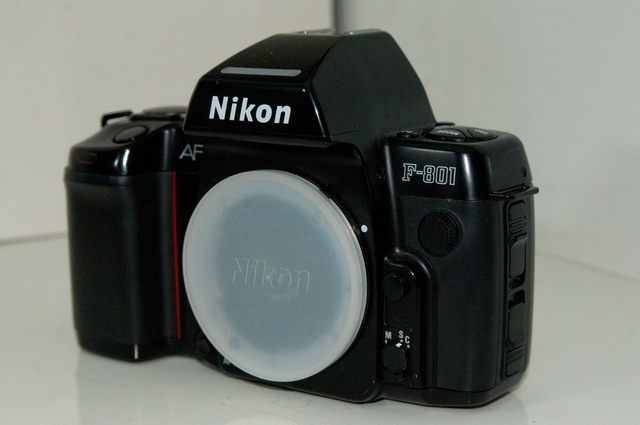
Vendo, dopo aver acquistato la tanto desiderata Nikon F100, Reflex semi-professionale detta dai fotografi di un tempo IL MULO per la sua robustezza e qualità costruttiva.
Inutile dire che me ne privo dopo averla usata (poco a dire la verità) con grande soddisfazione. La macchina è perfetta. L’ho acquistata un anno fa su ebay da un “maniaco” amatore che la teneva per collezione.
Oggetto della vendita
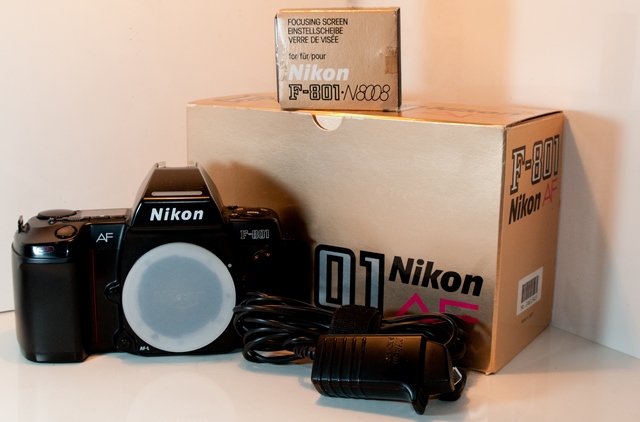
Nella vendita sono compresi, oltre la macchina fotografica (senza obiettivi), lo scatto remoto Nikon MC-12A ed il Focusing Screen originale Nikon (da soli valgono più di 30 euro).
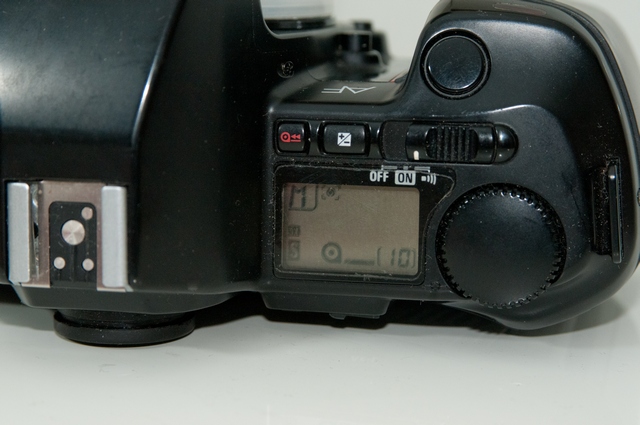
Non previsto nella vendita
Non posso fornire il manuale originale (cartaceo) ma soltanto una copia elettronica la quale vi sarà inviata via email. Non è previsto nessun altro oggetto se non quelli elencati nel paragrafo “Oggetto della vendita”.
Descrizione
Ecco cosa ne dice il sito Nital.it (importatore italiano della Nikon):
![]() Tipo: fotocamera reflex autofocus 24X36mm, con esposimetro TTL incorporato
Tipo: fotocamera reflex autofocus 24X36mm, con esposimetro TTL incorporato
![]() Tempi di posa: da 30 sec. a 1/8000 e B
Tempi di posa: da 30 sec. a 1/8000 e B
![]() Gamma sensibilità: ISO 25-5000 (DX), 6-6400 (manuale)
Gamma sensibilità: ISO 25-5000 (DX), 6-6400 (manuale)
![]() Otturatore: a tendina sul piano focale
Otturatore: a tendina sul piano focale
![]() Sincro-flash: contatto diretto; sincro X, 1/250 sec.
Sincro-flash: contatto diretto; sincro X, 1/250 sec.
![]() Predisposizione motore: con motore incorporato
Predisposizione motore: con motore incorporato
![]() Inizio produzione: 1988
Inizio produzione: 1988
![]() Peso: 775 gr. (comprese batterie)
Peso: 775 gr. (comprese batterie)
All’epoca della sua presentazione, questa fotocamera vantava il motore più rapido tra quelli integrati (3,3 fotogrammi/secondo), ed è stata la prima Nikon dotata di display a cristalli liquidi sul tettuccio e di un selettore principale di controllo.
Era l’apparecchio più completo in listino, con tempi di posa fino a 1/8000 sec., e un autofocus molto veloce.
Le opzioni per quanto concerne i modi di esposizione comprendevano l’automatismo programmato normale, con tempi rapidi e dual, oltre alle due priorità e alla modalità manuale.
Tra le altre caratteristiche, il pentaprisma high eyepoint (ideale per chi fa uso degli occhiali), la misurazione multi-zona Nikon Matrix o semispot a scelta, la compesazione dell’esposizione, il blocco della memoria, le esposizioni multiple, il flash TTL con fill-in automatico misurazione Matrix, la possibilità di sincronizzazione sulla seconda tendina, l’autoscatto variabile, l’avvisatore acustico, il riavvolgimento automatico del film e gli schermi di messa a fuoco intercambiabili.
In sostanza, un apparecchio al top, adatto sia all’impiego delle ottiche AF Nikkor che degli AIS con messa a fuoco manuale. Rispetto alle fotocamere prodotte in precedenza, il logotipo di identificazione (F-801 o N8008) è a destra, mentre la dicitura AF viene spostata dall’altro lato dell’obbiettivo.
Nell’aprile 1991, la F-801 venne affiancata da una nuova versione, la F-801s (N8008s per il mercato americano), con un sistema autofocus ancora più veloce e l’aggiunta della misurazione spot, mutata dalla F4. Per tutti gli altri aspetti, l’apparecchio è identico alla F-801.
Caratteristiche
Qualche cosina al volo….
Esposizione: automatica Matrix 3D, prevalenza centrale, spot.
Compensazione esposizione: 5 stop con incrementi di 0,3.
Esposizioni multiple: sì.
Sincro flash: 1/250s, sincro flash sulla 2° tendina, compensazione esposizione flash.
Mirino: 94%.
Programmi: esposizione automatica, a priorità di tempi, a priorità di diaframmi, manuale.
Controllo profondità di campo.
Motore: 3,3 fotogrammi al secondo.
Alimentazione: 4 pile stilo AA (non incluse).
e qualche cosa, purtroppo in inglese, di veramente approfndito:
Type of camera;- Integral-motor autofocus 35mm single-lens reflex
Picture format: 24mm x 36mm (standard 35mm film format)
Lens mount: Nikon F mount
Lens: AF Nikkor lenses, and other Nikon lenses with Nikon F mount (with limitation) available
Focus modes: Autofocus, and manual focus with electronic rangefinder
Autofocus Autofocus detection system: TTL phase detection system using Nikon advanced AM200 autofocus module
Autofocus detection range: Approx. EV minus I to EV 19 (at ISO100)
Autofocus actuation method: Single servo and continuous servo
Focus Tracking: Focus tracking is automatically activated when the camera is set to Continuous Servo Autofocus and CL film advance mode.
Autofocus lock: Possible by lightly pressing shutter release button in Single Servo AF mode or by using AF Lock button
Electronic rangefinder: Available in manual focus mode with an AF Nikkor and other Ai-type Nikkor lenses with a maximum aperture of f/5.6 or faster
Exposure metering: Three types of exposure metering systems – Matrix Metering, Centre-Weighted and Spot
Exposure meter switch: Activated by lightly pressing shutter release button; stays on for approx. 8 sec. after lifting finger from button
Metering range: EV 0 to EV 21 (at ISO 100 with f/1.4 lens) for Matrix and Centre-Weighted metering; EV 4 to EV 21 (at ISO 100) for Spot metering
Exposure modes: Programmed auto (PD, P, PH), shutter-priority auto (S), aperture-priority auto (A) and manual (M) modes Programmed auto exposure control;-Both shutter speed and aperture are set automatically; flexible program in one EV step possible
Shutter-priority auto exposure control ;-Aperture automatically selected to match manually set shutter speed
Aperture-priority auto exposure control ;-Shutter speed automatically selected to match manually set aperture Manual exposure control;-Both aperture and shutter speed are set manually
Focusing screen;- Nikon advanced B-type BriteView screen with central focus brackets for autofocus operation
Viewfinder information;- The following LCD indications appear: focus indicators, exposure modes, shutter speeds/film speeds, aperture/ exposure compensation value, electronic analogue display, exposure compensation mark; ready-light LED; viewfinder display is illuminated automatically or by pressing the viewfinder illumination button
LCD information;- The following indications appear: exposure modes, metering types, exposure compensation, electronic analogue display, shutter speeds/film speeds, aperture/exposure compensation value, film speed setting, DX-coded film speed setting, film advance mode, film installation, film advance and rewind, self-timer, multiple exposure, frame counter/ self-timer duration/number of multiple exposure
Auto exposure lock;- Available via sliding the AE Lock lever while the meter in on
Film speed range;- ISO 25 to 5000 for DX-coded film; ISO 6 to 6400 for manual setting
Film speed setting;- At DX position, automatically set to ISO speed of DX-coded film used; with non-DX-coded film, ISO speed is set manually
Film loading;-Film automatically advances to first frame when shutter release button is depressed once
Film advance;- In S (Single-frame) shooting mode, film automatically advances one frame when shutter is released; in CH (Continuous High) or CL (Continuous Low) shooting mode, shots are taken as long as shutter release button is depressed; in CH mode, shooting speed is approx. 3.3fps, and in CL, approx., 2.0 fps (in Continuous Servo Autofocus or manual focus mode, with new batteries at normal temperatures, and a shutter speed faster than 1/125 sec. in manual exposure mode).
Frame counter;- Accumulative type: counts back while film is rewinding
Film rewind;- Automatically rewinds by pressing film rewind button and multiple exposure film rewind button; approx. 10 sec. per 24-exposure roll; stops automatically when film is rewound
Self-timer;- Electronically controlled; timer duration can be selected between 2 to 30 sec. in one sec. increments; blinking LED indicates self-timer operation; two-shot self-timer is possible; cancelable
Exposure compensation;- Possible using exposure compensation button within ±5 EV range in 1/3 EV steps
Multiple exposure;- Up to 9 exposures can be set
Depth of Field preview button;- Provides visual verification of depth of field; can be previewed in A or M mode
Reflex mirror;- Automatic, instant-return type
Camera back;- Hinged back; exchangeable with Nikon Multi-Control Back MF-21 or Data Back MF-20
Accessory shoe;- Standard ISO-type hot-shoe contact; ready-light contact, TTL flash contact, monitor contact
Flash synchronization;- 1/60 to 1/250 sec. in PD, P, PH or A mode; in S or M mode, shutter fires at speed set, and when set from /250 to 1/8000 sec., shutter is automatically set to 1/250 sec.; down to 30 sec. shutter is available by using SB-24 in rear-curtain sync
Flash ready-iight;- Viewfinder LED lights up when Nikon dedicated speedlight is ready to fire; links to warn of poor camera/speedlight connection or insufficient light for correct exposure
Autofocus flash photography ;- Possible with Nikon Autofocus speedlights SB-24, SB-23, SB-22 or B-20 etc.
Power source;- Four AA-type batteries
*
For Continuous Servo Autofocus with AF Nikkor lens covering the full range from infinity (-) to the closest distance and back to infinity (-) before each shot
* Some lenses cannot be attached to the F-801s/N8008s:
** K1 ring cannot be attached to AF Nikkor lenses. The ring may damage CPU contacts Use PK-11A or BR-6 instead.
*** PK-1 PK-2, PK-3 and PN-I rings cannot be attached to the F-801s. PK-11 ring cannot be attached to any AF Nikkor lense – These rings may damage CPU contacts. Use PK 11A for AF Nikkor lenses instead of PK-11.
O:-Compatible X:- Incompatible
*1 With maximum effective aperture of f/5.6 or faster when using the TC-16A Autofocus Converter.
*2 With maximum aperture faster than f/5.6.
*3 Set shutter speed to 1/125 sec. or slower,
*4 Because the diaphragm is coupled to the focusing ring, determining exposure is independent from camera’s metering system.
*5 Aperture cannot be selected.
*6 Set preset ring, then use AE-lock lever before shifting.
*7 Set preset ring, then determine exposure before shifting.
*8 With Ai- or Ai-S-type Nikkor lenses having maximum aperture of f/3.5 or faster.
*9 With maximum effective aperture of f/5.6 or faster.
*10 Shutter should be released after exposure is measured by stopping down PB-6.
*11 Stop-down exposure measurement will be performed.
ACCESSORY COMPATIBILITY The following accessories cannot be used with the Nikon F-801s/N8008s:-
Close-up Attachments PK 1 – 3, PN-1, K2, BR-2
Body Cap BF-1
Eyepiece Accessories for F3HP/F3T
a) Nikon PK-1, PK-11, BR-4 and K-1 rings cannot be mounted directly on AF Nikkor lenses.
b) The Nikon Matrix meter evaluates scene brightness and contrast using a five-segment sensor. Since coloured fillers and neutral density filters which have a high exposure factor will also significantly affect a scene’s contrast rendition, they may cause the meter to incorrectly identify the scene’s actual contrast/brightness condition. The blue (B12), orange (056) and red (Ri filters are examples of such coloured filters.
c) Linear polorizer are not compatible with the viewing system used in Nikon AF cameras. For the best results and to maintain autofocus and exposure operation, we recommend using a circular polarizer, which is fully compatible with the Nikon system. Using a linear polariser, however, will not damage the Nikon system, and it may be used for fully manual focusing and exposure settings made without using the built-in meter or electronic rangefinder.
d) Special filters, such as soft focus filters, cannot be used for autofocus or for manual focus with electronic range finder.
This means you can perform automatic balanced Fill-Flash in TTL made in every flash shooting situation, for beautiful, naturally balanced foregrounds and backgrounds. Automatic balanced Fill-Flash lets you choose any at the four different flash categories shown, matching your Speedlight TTL mode with the appropriate metering system and exposure mode.
Notes on Nikon F801s/N8008s Matrix Balanced Fill-Flash When taking flash pictures, although the subject is usually well illuminated, background lighting can vary dramatically. This is especially true when the main subject is very close, and the background is relatively dark or only moderately bright. Matrix Balanced Fill-Flash balances both the subject and background illumination, automatically. How? Matrix Metering adjusts for the background and the TTL flash exposure level, so the flash illumination is balanced and won’t overpower the foreground subject. This creates a natural and pleasing effect, filling in harsh shadows and bringing out subject detail without losing the correct background exposure. This system operates automatically: based on a combination of general scene brightness and contrast, the exposure value for the background is determined by one of five computation methods: Low-Brightness Weighted, Centre-Segment, Average, High-Brightness Weighted, or Very-High-Brightness Weighted. Flash exposure value is controlled in a similar way. The combination of ambient light and flash light is balanced to produce a natural and pleasing effect.
In Programmed Auto (PD, P, PH) modes, the sync speed of 1/250 sec. has priority, but when the aperture reaches its largest limit (variable according to ISO film speed), the program line fixes the shutter speed at 1/60 second. Aperture is controlled between f/4 (at ISO 100) and the lens’ smallest aperture. In Shutter- Priority Auto (S) mode, you can choose sync speeds from 1/250 to 30 sec., enabling you to shoot, for example, a cityscape of night lights, with automatic flash exposure for foreground subjects. Aperture is controlled between f/2.8 (at any ISO film speed) and the lens’ smallest aperture. In Aperture-Priority Auto (A) mode, you select aperture and the camera selects a suitable sync speed, within a range of 1/60 to 1/250 sec. (at any ISO film speed). With Manual (M), you control both aperture and shutter speed while the flash exposure is determined by scene brightness and contrast, with Matrix Balanced Fill-Flash control throughout. In S and M modes, when you select a shutter speed faster than 1/250 sec. and then turn the flash unit ON, the F-801(s) automatically shifts to 1/250 sec.
Condizioni dell’oggetto
Il macchina fotografica e’ in perfette condizioni, perfettamente funzionante con segni d’uso estetici molto limitati dovuti soltanto alla sua età anagrafica.
Pagamento
Sono accettate le seguenti formule di pagamento: Pay-Pal, Bonifico Bancario ma NON sono accettate spedizioni in contrassegno.
Spedizione
L’oggetto verra’ spedito entro 48/72 ore dalla verifica del pagamento. L’oggetto verra’ imballato nel migliore modo possibile, ma si declina ogni responsabilita’ per danni causati durante la spedizione. E’ possibile assicurare la spedizione con un costo aggiuntivo di 3 euro.
Garanzia
La legislazione vigente nell’Unione Europea prevede che anche i privati siano tenuti a dare garanzia sugli oggetti venduti, salvo che tale garanzia non sia esplicitamente esclusa al momento della vendita. In conseguenza di ciò anche se l’oggetto è del tutto funzionante, esso è venduto “così com’è”, con esclusione esplicita di qualsiasi forma di garanzia data dalla parte venditrice, quindi chi farà offerte per l’oggetto proposto, con la propria offerta accetta incondizionatamente l’esclusione di qualsiasi garanzia per l’oggetto stesso.
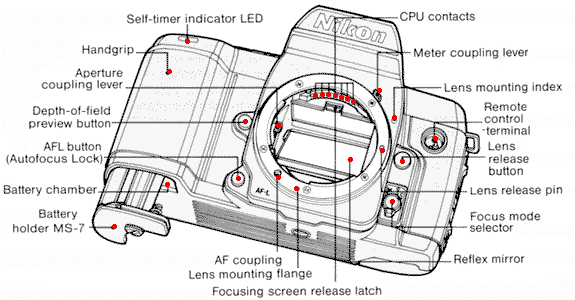


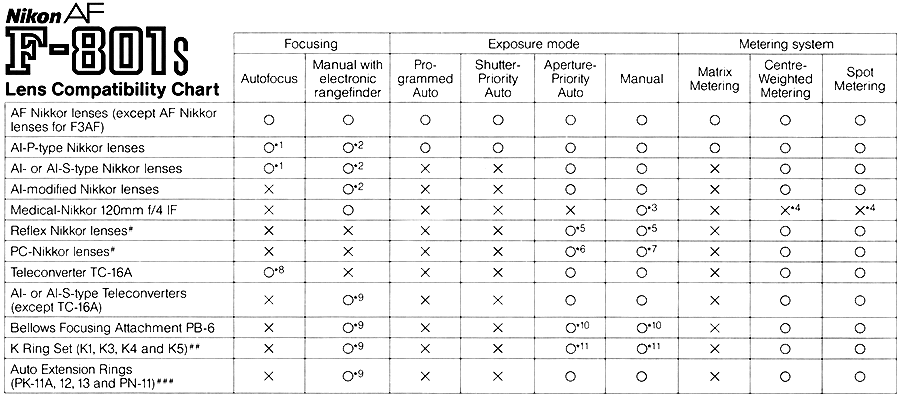
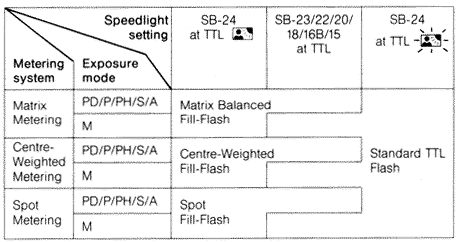
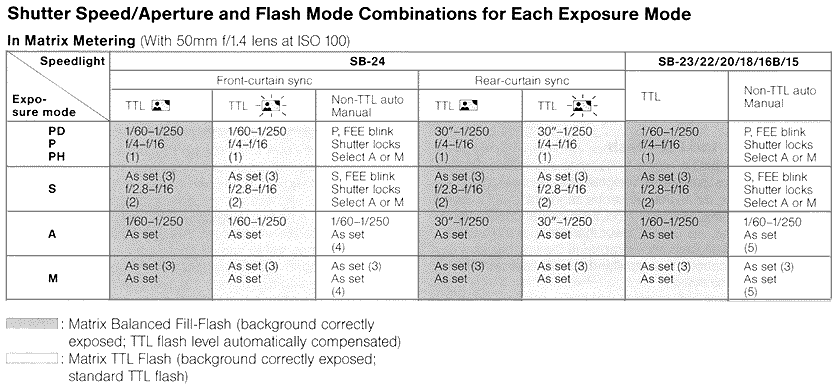
8 risposte su “Vendesi: Nikon F801 (N8008) a pellicola con imballi originali e scatto remoto”
Salve Giulio, provi a dare una letta ai seguenti post:
https://www.adolfo.trinca.name/wordpress/index.php/2010/02/24/manuale-nikon-f100/
https://www.adolfo.trinca.name/wordpress/index.php/2009/11/23/cercare-un-manuale-o-istruzioni/
https://www.adolfo.trinca.name/wordpress/index.php/2009/05/28/avete-perso-il-manuale-duso-diqualsiasi-cosa/
https://www.adolfo.trinca.name/wordpress/index.php/2008/05/12/avete-macchine-fotografiche-vecchie-e-senza-manuale/
Buongiorno, anche io ho questa grandiosa macchina…
Potreste mica fornirmi una copia del manuale?
Grazie..
#giorgio: eh eh eh, la capisco povera piccola, comunque l’email ve l’ho mandata…adesso sta a voi mettervi d’accordo.
la horizont l’avevo promessa ad un fotografo di Ravenna uno bravissimo, giovane, gli ho detto che non c’era fretta ma saranno passati quasi due anni… vederla triste che mi guarda dentro la cassaforte, aspetta solo di scattare. che strazio…
@giorgio. io ho venduto la 801 per prendere la mitica f100, adesso recupero l’email di Alessandra se l’ha lasciata e le dico della tua disponibilità.
avrei una horizont ed una F100……………
@Alessandra: venduta tempo fa mi spiace!
Ciao, volevo sapere se la Nikkon F801 è ancora in vendita???è passato molto tempo ma ho ancora speranze!!
grazie!